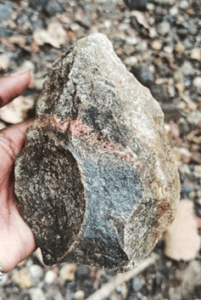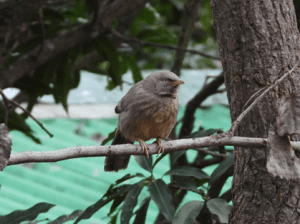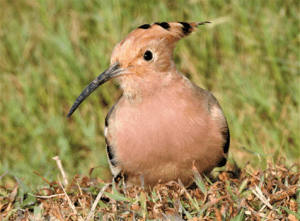WSDP Bulletin (06/01/2024)
(Newspapers, PIB and other important sources)
Prelim and Main
1. 2023 warmest on record, temperatures 1.48°C above preindustrial level READ MORE
2. National Birds Day: The various moods & colours of Indian city birds, through the eyes of an amateur ornithologist READ MORE
3. Palaeolithic tool discovery adds to understanding of human settlements in Telangana READ MORE
4. ‘Deep tech’ policy to be sent to Cabinet for approval, says scientific adviser READ MORE
5. Cabinet nod for PRITHVI initiative for ease of research in earth sciences READ MORE
6. PMI signals December performance was a three-month high READ MORE
7. India India’s real GDP growth for 2023-24 estimated at 7.3% READ MORE
8. Centre’s Digi Yatra enrolment takes off as airport security staff sign up flyers without their consent READ MORE
9. China’s Kuafu-1 probe records massive solar flare READ MORE
Main
GS Paper- 1
1. Deciphering barriers, leveraging opportunities READ MORE
2. Domestic violence: An untamed evil READ MORE
3. Weather anomalies driven by climate change cause scanty rain, snow in post-monsoon India READ MORE
GS Paper- 2
POLITY AND GOVERNANCE
1. Simultaneous Elections in Plural Societies: Overlapping Social Cleavages and Democratic Stability in India READ MORE
2. There Is No Lack of Judicial Power in India. Just a Refusal to Act on It. READ MORE
3. Modi govt, criminal laws and new India READ MORE
SOCIAL ISSUES
1. Quality education needs quality teachers READ MORE
INTERNATIONAL ISSUES
1. The evolving role of the Colombo Security Conclave READ MORE
2. Global implications of the Sino-Russian biotechnology collaboration READ MORE
3. S.-China Competition: Perspectives from South Asia READ MORE
4. Evolution of the BRICS: Has It Served as an Institution of the South? READ MORE
GS Paper- 3
ECONOMIC DEVELOPMENT
1. A case for inclusive wealth assessment of Indian states READ MORE
2. Illegal Immigration and Institutional Failures READ MORE
3. An Elusive Take-off READ MORE
4. Did the Implementation of GST Hurt Municipal Finances? READ MORE
ENVIRONMENT AND ECOLOGY
1. Are the COPs Just and Equitable? READ MORE
2. Loss & damage: 85% of costliest climate-linked disasters in 2023 were floods & storms; mostly affected poor READ MORE
3. IISc study in Arunachal Pradesh reveals how logging and climate change impact montane birds READ MORE
SCIENCE AND TECHNOLOGY
1. Drug war: On use of antibiotics and antimicrobial resistance READ MORE
INTERNAL SECURITY
1. Cybercrime surge: Need to strengthen cybersecurity system READ MORE
DISASTER MANAGEMENT
1. Understanding and Tackling Urban Floods in India READ MORE
GS Paper- 4
ETHICS EXAMPLES AND CASE STUDY
1. The evolving landscape of philanthropy READ MORE
2. Crafting your life’s symphony with IQ, EQ, SQ READ MORE
3. Feeling of compassion READ MORE
Questions for the MAIN exam
1. Challenges for India in Indo-pacific regions are high as China is not only strengthening its naval capabilities but maintaining strong defence relationships with states in the Indian Ocean region and conducting regular maritime exercises. In the light of statement discuss how revival of SAARC can be gamechanger for India?
2. Creating a collaborative bilateral alliance between India and the USA in the field of biotechnology growth and innovation can help counter the potential of the Sino-Russian biotechnology collaboration. Discuss.
3. India’s rapid GDP growth has lifted millions out of poverty but it neglects the environmental costs of growth, the social value of natural resources, and the widening chasms of socio-economic inequalities. Examine.
4. The BRICS grouping has strived to democratise the global financial system by reforming the functioning of the Bretton Woods institutions; moreover, against the trends towards an increasingly unequal world order, reforming multilateral institutions remains the primary focus of the group. Discuss in the light of recent developments.
5. Indian Constitution is a binding legal document not a statement of political intent to be enforced at the discretion of the government of the day. Comment.
QUOTATIONS AND CAPTIONS
- To befriend the one who regards himself as your enemy is the quintessence of true religion.
- China is not only strengthening its naval capabilities; it also maintains strong defence relationships with states in the Indian Ocean region and also conducts regular maritime exercises in the Ocean.
- The Sino-Russian biotechnology collaboration, augmented by its strategic focus on pharmaceuticals and economic growth, has called for a global concern on the future of globalization.
- Creating a collaborative bilateral alliance between India and the USA in the field of biotechnology growth and innovation can help counter the potential of the Sino-Russian biotechnology collaboration.
- India’s rapid GDP growth has lifted millions out of poverty, yet the accompanying environmental degradation and resource stress pose significant threats to long-term prosperity.
- India’s quasi-federal structure post-independence has evolved to include the concepts of cooperative and competitive federalism.
- The Gross Domestic Product (GDP) has been the shorthand for economic success for decades, yet its focus on short-term output obscures more than it reveals. It neglects the environmental costs of growth, the social value of natural resources, and the widening chasms of socio-economic inequalities.
- India has seen storms and hurricanes increase in severity, heatwaves and cold waves, and harsh droughts and floods, and its cities remain vulnerable.
- To prepare and mitigate instances of urban floods, states must ensure proper synchronisation between their own agencies and those of the Indian government.
- The BRICS grouping has strived to democratise the global financial system by reforming the functioning of the Bretton Woods institutions and reforming multilateral institutions by reversing the trends towards an increasingly unequal world order, which has remained the primary focus of the group.
- Consistently, the COPs are, at best, inadequate and, at worst, insincere in addressing the climate concerns.
- The goods and services tax has adversely affected municipal finance. The extent of loss due to implementing GST is examined and ways to streamline municipal finance in India are proposed.
- Indian Constitution is a binding legal document not a statement of political intent to be enforced at the discretion of the government of the day.
ESSAY TOPIC
- The truly happy ones, understand life.
50-WORD TALK
- It’s always good to hear our economy is doing well, as the latest UN report says. But tags like ‘fastest-growing’ shouldn’t encourage complacency. In fact, further acceleration is needed. Just government-led investment won’t address India’s needs. Unless private sector pitches in, large parts of India will remain unemployed and poor.
Things to Remember:
- For prelims-related news try to understand the context of the news and relate with its concepts so that it will be easier for you to answer (or eliminate) from given options.
- Whenever any international place will be in news, you should do map work (marking those areas in maps and exploring other geographical locations nearby including mountains, rivers, etc. same applies to the national places.)
- For economy-related news (banking, agriculture, etc.) you should focus on terms and how these are related to various economic aspects, for example, if inflation has been mentioned, try to relate with prevailing price rises, shortage of essential supplies, banking rates, etc.
- For main exam-related topics, you should focus on the various dimensions of the given topic, the most important topics which occur frequently and are important from the mains point of view will be covered in ED.
- Try to use the given content in your answer. Regular use of this content will bring more enrichment to your writing.







